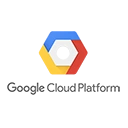Google App Engine is a fully managed platform for building and deploying applications. In this guide, we'll explore the basics of Google App Engine and provide a sample code snippet to help you deploy a simple web application.
Key Concepts
Before diving into the code, it's important to understand some key concepts related to Google App Engine:
- App Engine Standard and App Engine Flexible: Google App Engine offers two environments: Standard and Flexible. The Standard environment is optimized for web applications, while the Flexible environment provides more flexibility with custom runtimes.
- App Engine Services: App Engine provides various built-in services like Datastore, Memcache, and more for building scalable applications.
- Scalability: App Engine automatically handles scaling your application in response to incoming traffic. You don't need to manage servers or infrastructure.
Sample Code: Deploying a Simple Web Application
Here's a sample code snippet to deploy a simple web application using Google App Engine in Python. We'll create a basic "Hello, World!" web application:
# Import the required module
from flask import Flask
# Create a Flask web application
app = Flask(__name__)
# Define a route and a handler function
@app.route('/')
def hello_world():
return 'Hello, World! This is my first App Engine app.'
# Run the application
if __name__ == '__main__':
app.run(host='127.0.0.1', port=8080, debug=True)
Deploying the Web Application
Once you have created your web application code, you can deploy it to Google App Engine using the
gcloudConclusion
Google App Engine is a powerful platform for building scalable web applications without worrying about infrastructure management. It provides a great environment for developers to focus on coding while Google handles the underlying infrastructure and scaling challenges.

